When was Muromachi Era? Why the 3rd of Ashikaga Shogun, Yoshimitsu built the Temple of The Golden Pavilion?
室町むろまち 時代 Muromachi Era, 室町 幕府 Muromachi Bakufu(Shogunate).
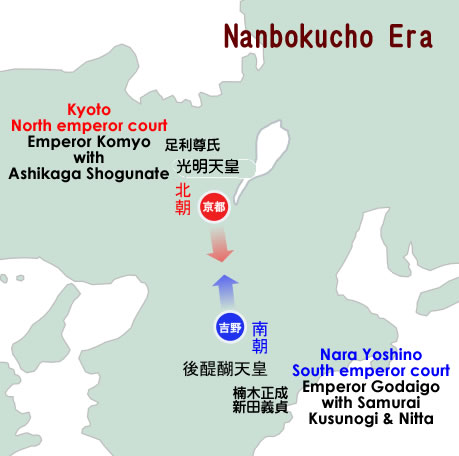
Date back to early 14th Century, 鎌倉幕府(Kamakura Shogunate Era)ended by 後醍醐天皇-the Emperor Godaigo. Kamakura Shogunate Era had Samurai Warriors government. So when the Emperor Godaigo defeated the Kamakura Shogunate, he tried to take back the Emperor government as used to be. However court nobles took most of powers and Samurai warriors had bad feeling about losing their administrative power. Then the leading samurai figure, 足利尊氏 (Ashikaga Takauji), who fought in the war to defeat the Kamakura Shogunate, disobeyed the Emperor Godaigo. And he set up the new Emperor, Komyo as 北朝(the north imperial court), and the Emperor Godaigo run away from Kyoto to the south, old time capital place, Nara – Yoshino and stand as 南朝(the south imperial court) in opposition to the North.
In 1338, Ashikaga Takauji was appointed as the General Shogun by the Emperor Komyo, and he established the 室町幕府(Muromachi Shogunate) based at the Muromachi town in Kyoto. However, his administrative power was not so strong, and he still had to pay attention to 守護大名(Shugo Daimyo: provincial feudal lord) to control them not to disobey him, and also had to confront with the south imperial court, which had powerful enemy Samurai warriors.
The 3rd Ashikaga Shogun, Yoshimitsu.The Golden Pavilion was the symbol of Ashikaga Shogunate power.
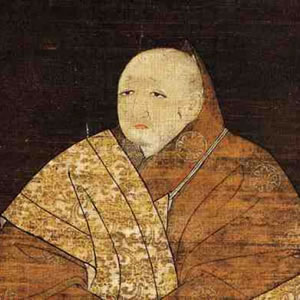
But after few decades, when the 3rd of Ashikaga Shogun, 義満 Yoshimitsu’s period, the powerful enemy were gone, the south imperial court was no longer powerful, and all the feudal lord was following his shogunate. Eventually he united both the north and south imperial court and his shogunate power was at the peak. Then in 1394, he passed the his Shogun title to his son, but he still carried the his administrative power, and he was appointed as the Grand Minister state, which is very rare for samurai class people to get this title. It proved that how powerful he was, he got highest title for both Samurai class and Court noble class.
Then he became a monk retired from the world but having with the power running the Ashikaga Shogunate. He started to build the gorgeous mountain villa with Golden reliquary hall(金閣 Kinkaku) which was called as 北山殿(Kitayamaden). He conducted the government affairs and he also invited the nobles to play poetry, music and sarugaku(noh) play, which developed the brilliant culture. It was the mixture of noble culture, Zen culture and Samurai culture, which is called Kitayama culture now. Yoshimitsu’s period was elegant and gorgeous time.
The trading between China, made a fortune.
He also made a fortune with the trading between China Ming Dynasty(日明貿易). The Kitayamaden was used as official greeting and farewell place for trade mission of China Ming Dynasty.
Import goods from China: copper coins, raw silk, medical herb, sugar, celadon, paintings, lacquer ware.
Export goods from Japan: Copper, sword, gold lacquer, fan, pure gold.
The Emperor Gokomatsu visit to the Kinkakuji
In 1408, The Emperor Gokomatsu visit to the Kinkakuji was held for 21 days, which was the longest visit for imperial visit in their history. The imperial visit, stayed over 20 nights means Yoshimitsu had enormous power.
There was another imperial visit held in Edo period on 17th century, the 3rd of Tokugawa Shogun period, the Emperor Gomizuo visited Nijyo Castle in Kyoto. This event was held for the honor and dignity of Tokugawa Shogunate, but the Emperor stayed only 4 nights.
Shortly after this, Yoshimitsu passed away, and by his will, Kitayamaden became Zen temple with the famous monk, Muso Soseki as the founder of the Zen temple, and named as Rokuon-ji which taken from his posthumous Buddhist name, Rokuon-in.
Burned down and reconstruction
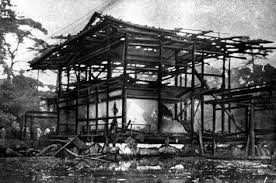
The Golden Pavilion was burned down by Onin civil war in 15th century, it reconstructed in Edo era by the Emperor Gomizuo,
In 1950 a young monk set fire, the Golden Paviliion was burned down totally. It was reconstructed in 1955. Two famous novel writer published the book regarding this news. One is that Mishima Yukio wrote, titled as “The Temple of the Golden Pavilion” and the other one is Mizukami Tsutomu wrote, titled as The Burning of the Golden Pavilion”
And in 1986, when Japan economy was so good, we called it bubbled economy, there was big repairing work, spending 740 million yen. The gold foil, 200,000 sheets, weighted about 20kg gold were used. The gold foil were 5 times thicker than before and sticked double.
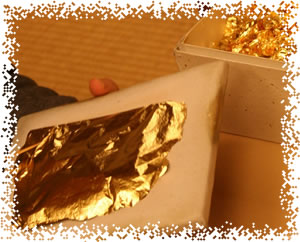
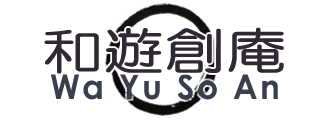
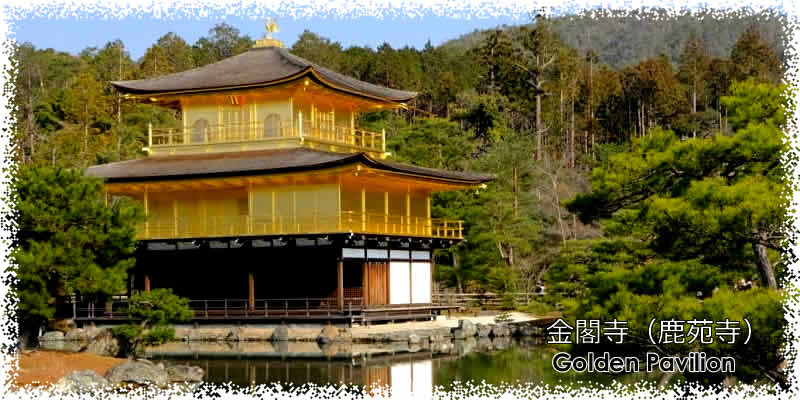
コメント